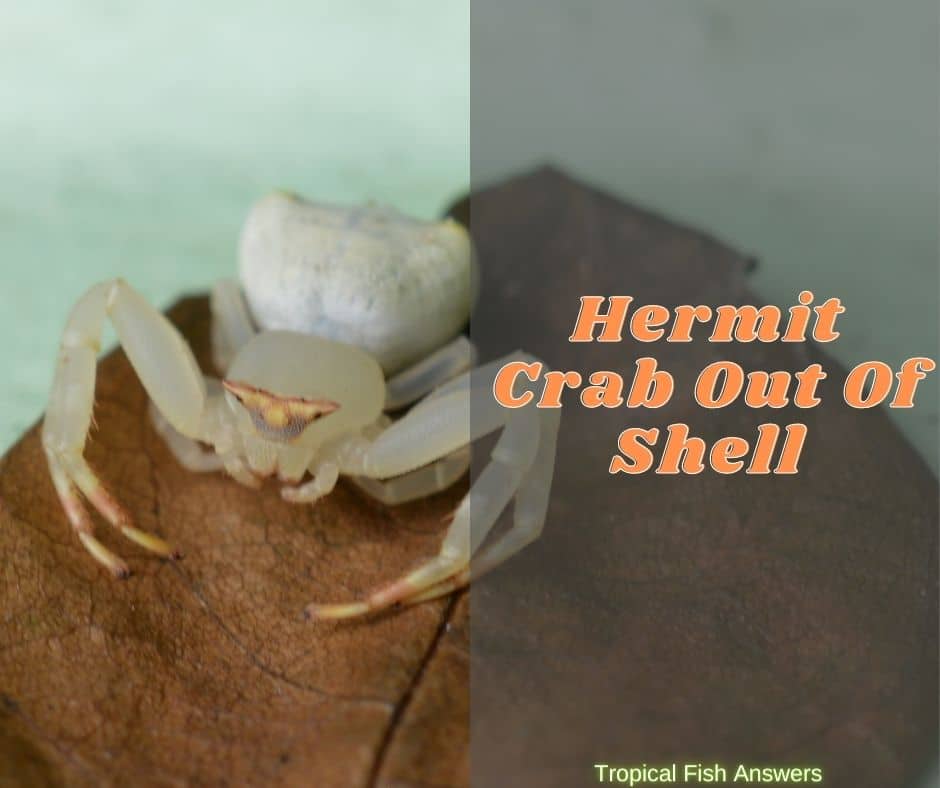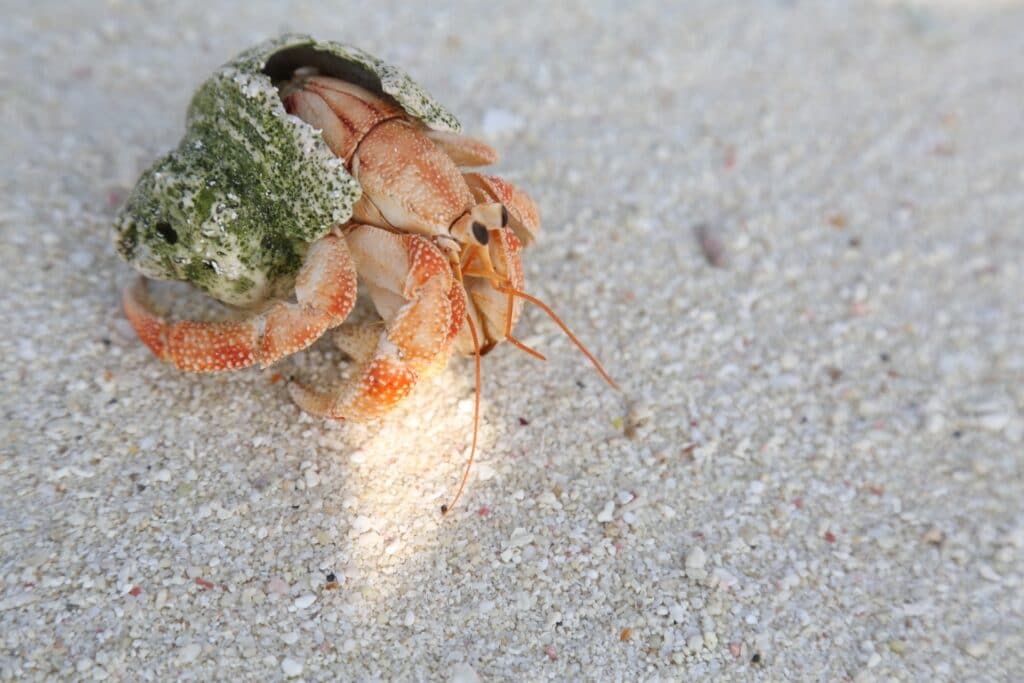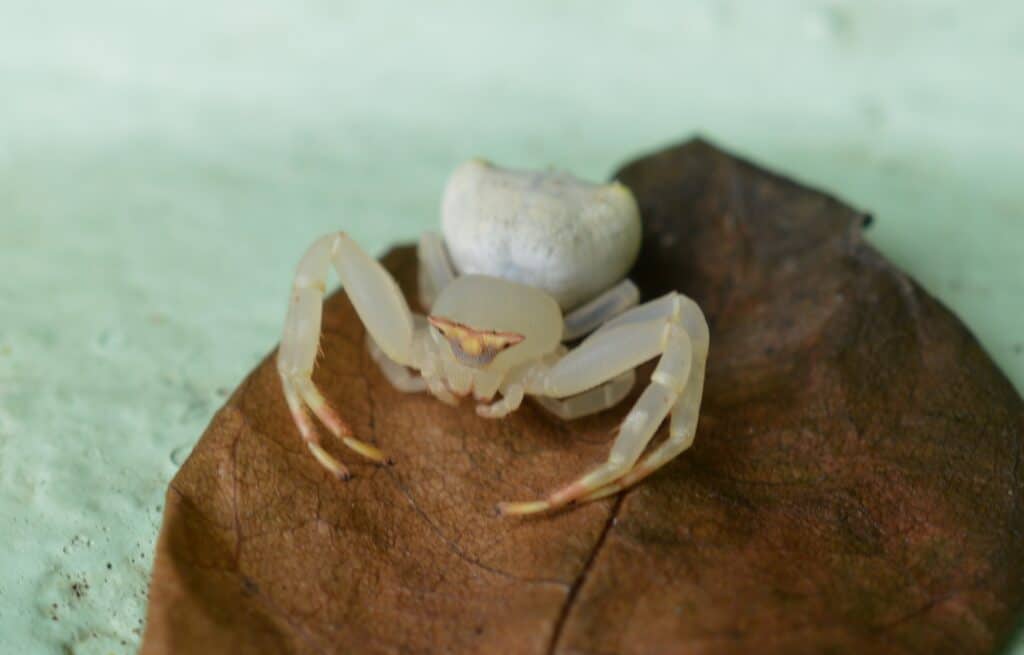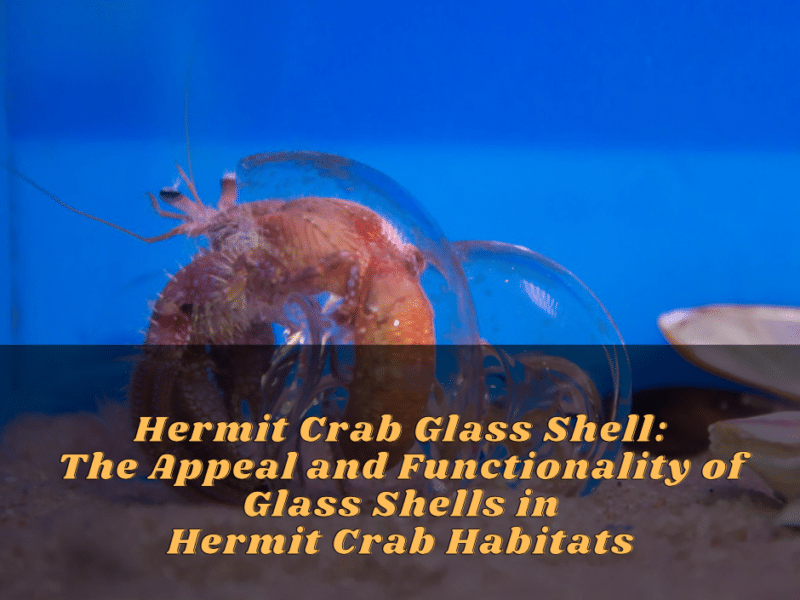|
Listen:
Getting your Trinity Audio player ready...
|
Hermit crabs are amazing creatures. They live in the ocean, eat small sea life, and have their language. Do you know that the crabs have unique ways of protecting themselves? They use a shell called a sculpture to protect themselves. It helps them survive in the wild and protects them from predatory animals. Sometimes, hermit crabs are stuck inside their shells. They die if they aren’t able to escape. A hermit crab’s shell is its home. It lives inside its own shell and will not leave until it dies. Let find out why hermit crab out of shell in this article.
The Important of Shell
If you own a hermit crab, you know how much they enjoy hiding in their shells. It seems like they pop right back in when you move too fast. They must have a sense of security.
Without a protective layer, its armor is very vulnerable to the elements. If you discover that your crab has left their shell, you might be freaked out for a second.
Don’t jump to conclusions just yet. We will explain how a hermit crab leaves their shell and how you can help them get back in.
What Does a Shell Do?
The protective barrier around the crab’s sensitive body is provided by its shell. It prevents their body from drying out and also protects them from damage. Without a shell, you can’t protect your crab against heat, light, and air. They can quickly die if they don’t have it. Crabs leave their shell while they are in the middle of their molting process. They will re-shell themselves once they are no longer covered in their armor.
What is the cause of a crab leaving its shell?
There are several reasons why the shell of a hermit crab can be left. It may be related to their health, but most of them are environmental. You can prevent it in the future by looking at why it happens in the first place.
1. Stress
Unfortunately, crabs can become very sick when they are shipped and distributed to pet stores. If the crab you bought is stressed out, it could cause them to leave its shell and die. This can happen because of physical damage and improper care. Check out the hermit crab care sheet here.
2. Shell Fighting
It can lead to shell fighting if you don’t have enough shelves to hold multiple hermit crabs simultaneously. This process happens when there are battles between crabs for their shell, which can be very dangerous. It can happen when a crab leaves their shell to find a new home, and another takes the crab they were using. The hermit is out of luck if there isn’t a shell that fits.
3. Irritation
Hermit crabs can get debris in the shell and can be exposed slightly. The crab may be trying to get rid of his annoyance by leaving the shell. To make sure it is free of small particles, you need to cleanse the inside.
4. The environment is too hot, too little, or too humid
The shells of the hermit crab will leave if the crab is too warm. It’s important to keep an eye on the air temperature and the temperature of the substrate to make sure there isn’t overheating. The warm end of the crabitat is expected to be around 80 to 81F. Some species of crabs do like higher temperatures, but most of them are not comfortable at 85F or higher. The cabinet’s temperature should be 72-75F at the cool end. The variance of temperatures to self-regulate is what makes a girlfriend crabs an ectothermic creature.
It is good to keep the humidity gauge out of water sources that could affect the reading and close to the substrate in the middle of the tank.
5. Death
At some point, you will have to say goodbye to your beloved crab. They fall from their shell when they pass. Due to age or undetected sickness, it might not be easy to pin down exactly what happened.
6. Hermit crab not wearing shell
The crabitat hermit crabs feel like they’re suffocating if the humidity level is too low. They leave their shells in the hopes that they will relieve the pain they are experiencing. If they had been exposed to low humidity many times, it would have caused irreversible gill damage. If the humidity gauge is located close to the bottom of the tank, it can be more accurate in determining the percentage of humidity in the air. The safe range is between 70% and 80% relative humidity. Cheap pet stores have an analog gauge that is not very accurate. If the homeless crab can’t find a suitable replacement, he can be left without a shell.
7. Calibration
A high humidity percentage is what causes a hermit crab to leave their shell. The crab has trouble breathing because of a high humidity level. If exposed to a high humidity level, it can lead to a gill infection that can cause irreversible damage. Maintaining humidity levels of more than 90% is discouraged. He could be in premolt or be molting crab, even though it is rare—symptoms before the start of the season.
There is a way to get a crab back in the shell.
If you notice that your crab is molting paler, skip this section and read the next one. If you notice that your crab is molting paler, skip this section and read the next one. It can take up to one month for the molting cycle to be completed.
You must understand that the process of putting the crab back in its shell is very sensitive. Handling their fragile bodies can hurt them and even cause death. They must be handled correctly.
Before you start doing anything, you should gently pick up the hermit crab behind its back legs or scoop it up with a spoon or other scoop. They must be thoroughly checked to see if there are any wounds or anomalies. If everything is going according to plan, it is time to work on the shell.
If you want to protect your crab, put it under a protective dome made from a large plastic soda bottle and move it to an isolation tank.
The water should be dechlorinated so that the shell can be boiled to remove any debris or bacteria.
It would help if you got a big container that can hold the crab and shell. It would be a good idea to put a small amount of dechlorinated water in the bottom. It will allow your crab to have the proper amount of humidity to be able to fit inside.
To fit the crab and shell, place them in a container large enough to hold them. It can take a while for your crab to re-shell, so monitor it visually, but don’t disturb them.
FAQS
What happens if a hermit crab is out of its shell?
When a hermit crab loses its shell, it may become disoriented and confused. This usually occurs because the animal has lost touch with the world outside of its home. Hermit crabs use their claws as sensory organs to navigate through their environment. When they lose contact with these appendages, they begin to panic. In addition, they also experience stress due to being separated from their familiar surroundings.
How long will it take for a crab to grow a new shell?
Hermit crabs do not naturally grow new shells. However, some species produce hard exoskeletons called carapaces under extreme environmental conditions such as drought. These hardened structures protect the animals’ soft body parts from harsh weather elements.
Can hermit crabs survive without a shell?
No. They can quickly die if they don’t have it.
Can I Pull a Dead Hermit Crab Out of Its Shell?
No. The only thing you can pull out of a dead hermit crab’s shell is the empty shell itself. You cannot retrieve the remains of the hermit crab within the shell.
Will hermit crabs die without saltwater?
Yes. Saltwater is essential for survival. Without it, hermit crabs will dehydrate and eventually die.
Conclusion
I hope that this article was useful to you. Please share this post with your friends and family. Thank you!




